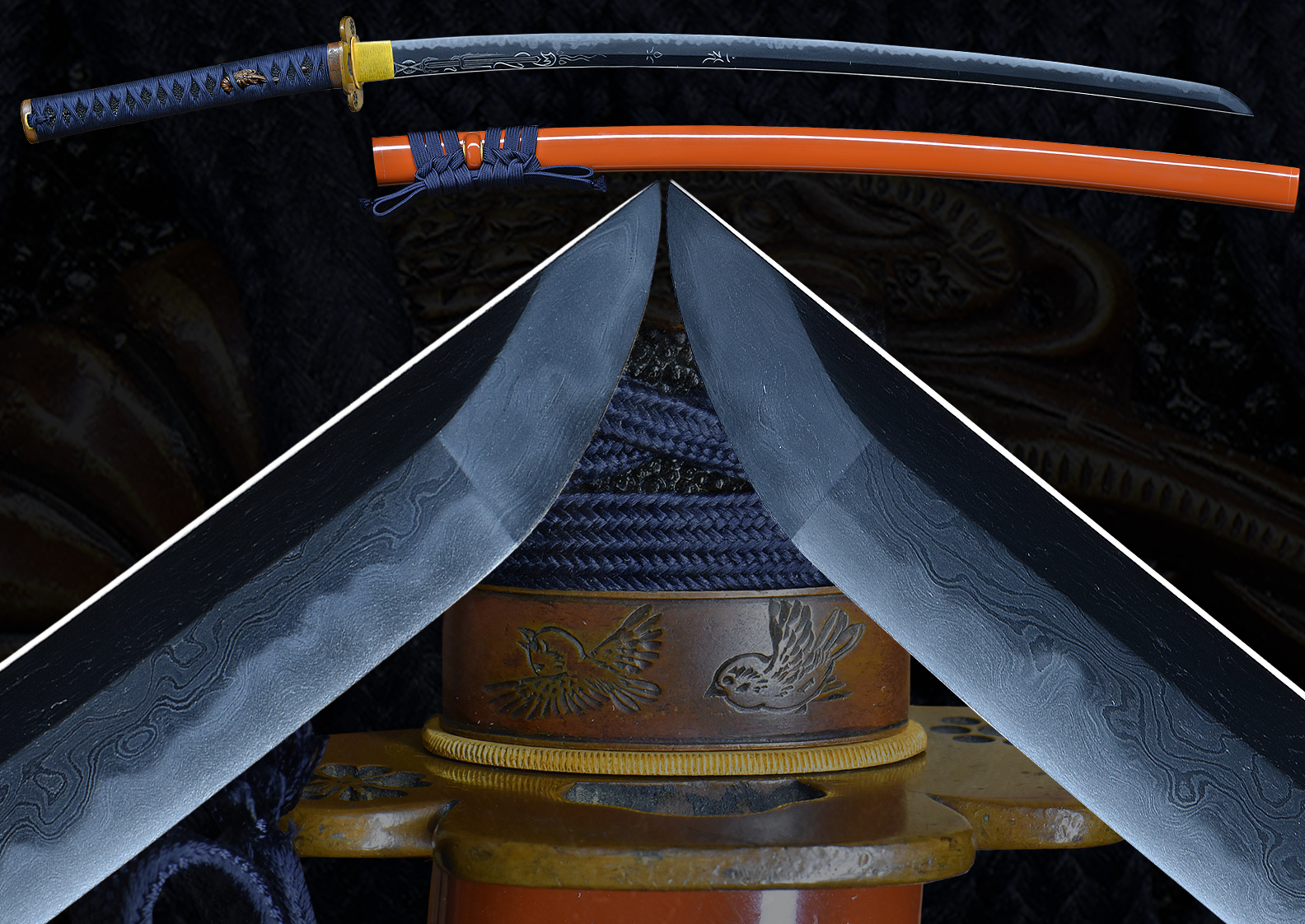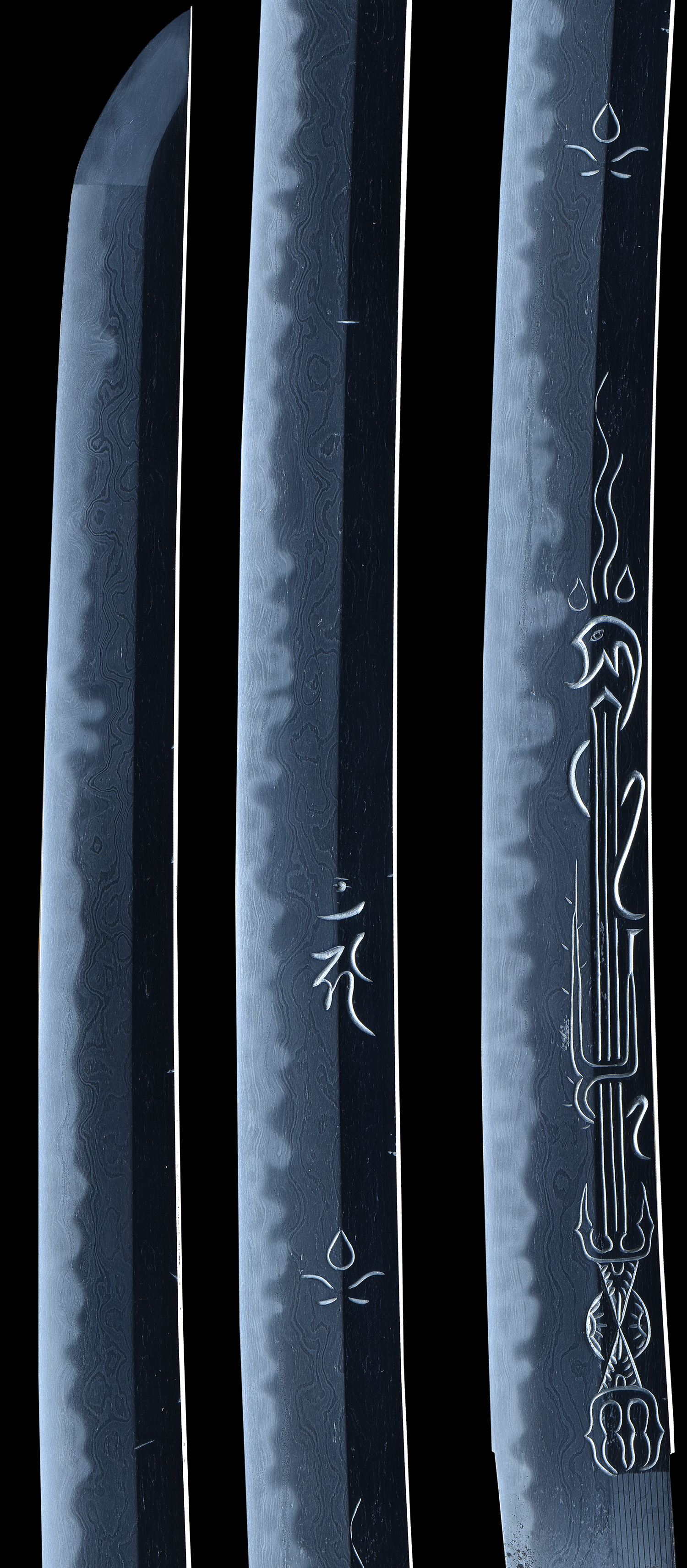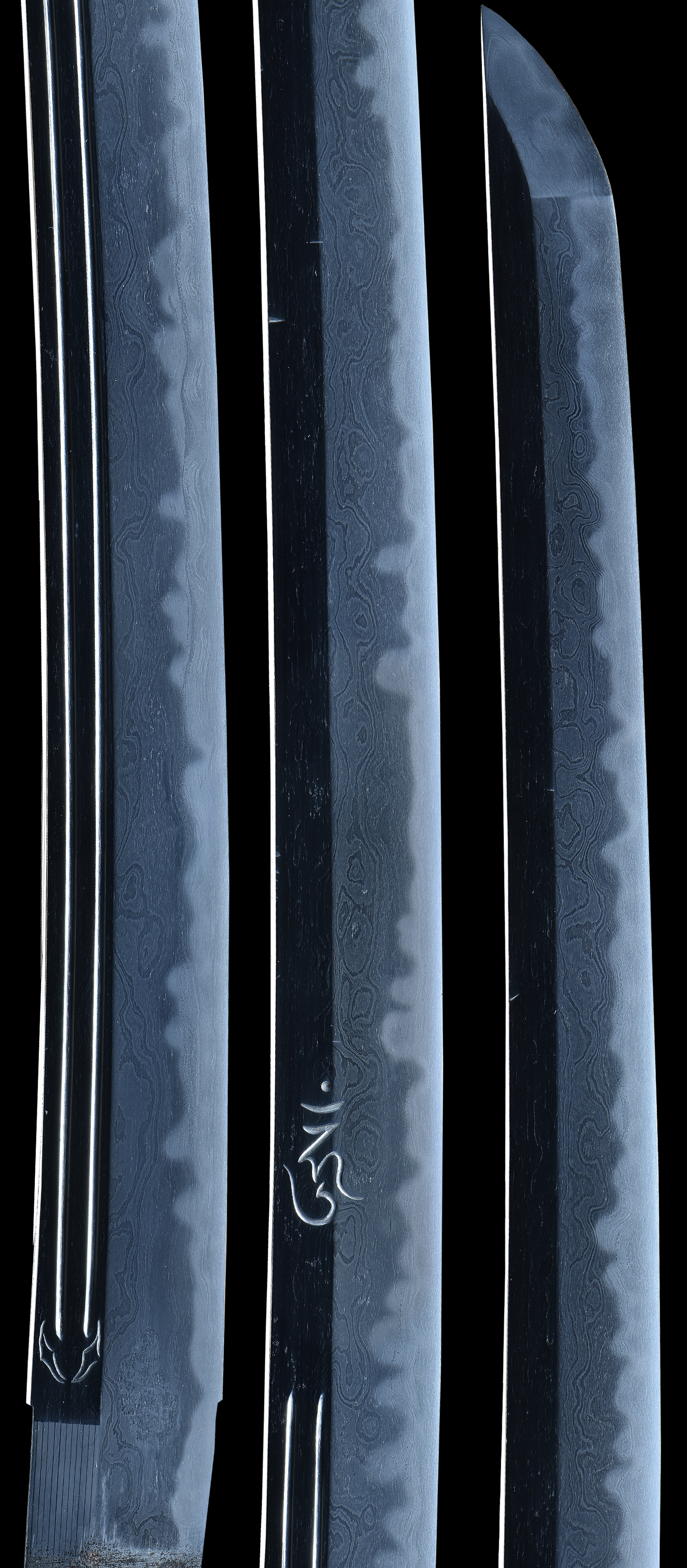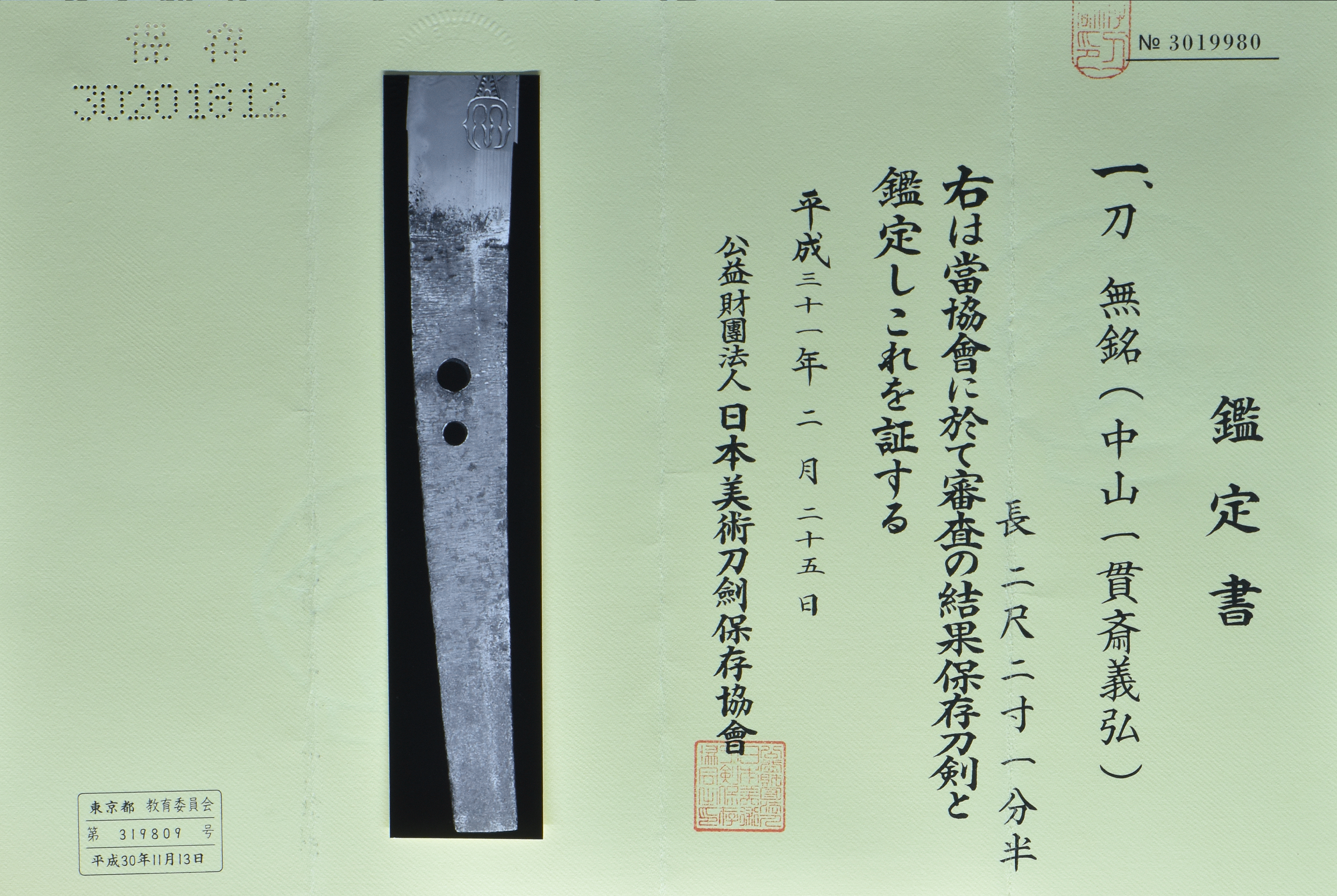This blade is spectacular, it is a site to behold and view. We believe this to be an utsushi of a Koto era sword by Norishige which are very uncommon and desirable. The hamon represents the best of this style by this smith based in a gunome midare with choji. It is laced with sunagashi, kinsuji and nie. The hada has a depth seldom seen on swords of this era. This is a deep, rich looking hada of the Mitsukawa style in which he was trained and can be seen in the juyo level token of Norishige also. The blade is loaded with chikei, ji-nie all on an elegantly woven pattern of a swirling masame, itame and mokume grain called Mistukawa blending for the perfect backdrop of this gorgeous hamon. The pictures cannot show the complete beauty of this steel and must be appreciated in hand. The polish is a spectacular sashikomi style which gives a crystal clear view of all the swords unique attributes. The boshi is ko-maru with hakikake and gunome-midare. The blade is O-suriage but may have been done purposely to emulate the great koto blades of Norishige. It is beautifully carved with an exceptional horimono of a dragon around a ken called “ So No Kurikawa “ with gomabashi and bonji also. Also, please note the kirikomi 切り込み (cutting mark) or battle scars. This is a very interesting aspect on this sword.
This sword is accompanied by an outstanding beautiful koshirae. The tsuka-ito and matching sageo are finished in a cobalt blue. The Same(rayskin) is lacquered in black. The menuki are copper and of lobsters. The fuchi kashira are copper and engraved with birds and bamboo. The tsuba is also copper and 4-lobed with tsukashi style mons. The saya is lacquered in a rich red gloss finish. all in all a beautiful package for an outstanding blade by Yoshihiro.
About the smith:
YOSHIHIRO (義弘), Bunsei (文政, 1818-1830), Musashi – “Nakayama Ikkansai Yoshihiro” (中山一貫斎義弘), “Bushū-jū Nakayama Kurondo Yoshihiro” (武州住中山蔵人義弘), “Ikkansai Yoshihiro” (一貫斎義弘), “Zushū Nirayama-hen Ikkansai Nakayama Yoshihiro” (豆州韮山辺一貫斎中山義弘), “Hitachi no Kuni-jū Yoshihiro kore o saku” (常陸国住義弘作之), real name Suzuki Zenkichi (鈴木善吉), he was born in the ninth year of Kansei (寛政, 1797) in Suruga’s Nakayama (中山) which he adopted later as his family name calling himself Nakayama Kurondo (中山蔵人), later he moved to Izu province where he supported Egawa Tarōzaemon Hidetatsu (江川太郎左衛門英龍, 1801-1855) – the governor (daikan, 代官) of Nirayama (韮山) and bakufu official for coastal defense – in the construction of a kiln, subsequently he moved to Mito where he learned the forging techniques of the Norishige school (則重) according to tradition from the 4th gen. Noritoshi (則利), however, the succession of generations between the 2nd and 5th gen. Noritoshi are unclear, he used the gō Ikkansai (一貫斎) and worked in the Norishige style with chikei and an ō-midare and selected his smith name in allusion to the great Gō Yoshihiro, he died on the twelfth day of the seventh month Keiō one (慶応, 1865) at the age of 64 in Maebashi (前橋) in Kōzuke province, chūjō-saku.
The legend of the Dragon:
Many Chinese believed the dragon held, or at least chased, the sun, and many drawings depict this as a flaming red ball. However, over the years, this sun changed color from red to a silvery-pearl color, and gradually the ball came to be considered a flaming pearl, known as the night shining pearl. It is with this that the dragon is almost invariably associated in art.
The link between serpentine shaped dragons and the pearl is reflected in a legend that states that Chi Liang, the Marquis of Sui, who was a Minister of State, was out walking one day, and found a wounded snake to which he gave medicine and saved its life. Sometime later, he saw the snake with a brilliant pearl in its mouth. The snake said ‘I am the son of His Majesty the Dragon, and I am indebted to you for the preservation of my life, and I have brought this pearl to thank you for your kindness.’ The Minister accepted the pearl and, being a dutiful subject, presented it to his sovereign, who placed it in his hall.
- Mei: Mumei
- Date: Late Edo (1800’s)
- Nagasa: 26-3/8 inches
- Sori: 18.0 mm
- Width at the ha-machi: 29.0 mm
- Width at the yokote: 19.0 mm
- Thickness at the mune-machi: 7.5 mm
- Construction: Shinogi zukuri
- Mune: Iori
- Nakago: suriage
- Kitae: Itame/mokume
- Hamon: Midare Choji
- Boshi: Ko-Maru
- Condition: Good polish
(shipping and insurance included)
Email us if your interested in this item and remember to include the order number for this item: fss-872.
Click to Enlarge Image
Click to Enlarge Image
KANTEI-SHO (鑑定書) ‒ APPRAISAL
Katana, unsigned: Nakayama Ikkansai Yoshihiro (中山一貫斎義弘)
No 3019980
nagasa ~ 67.1 cm
According to the result of the shinsa committee of our society, we judge this work as authentic and rank it as Hozon Tōken.
February 25, 2019
[Foundation] Nihon Bijutsu Tōken Hozon Kyōkai, NBTHK (日本美術刀劍保存協會)
For Sale



























